
In the current market of media conglomeration, there's hardly a need to rip off popular movies any more. The preferred solution now is to simply see what intellectual propery the current company already owns and reboot it, whether or not that makes sense. In previous decades, studios would rip off successful movies instead. When a "Rocky" hit big, more boxing movies followed, and "Star Wars" begat any number of sci-fi adventures hoping to ride the coattails. Rather than wondering how you might reboot Indiana
Jones without Harrison Ford, studios impressed by "Raiders of the Lost Ark" in the '80s might make "Treasure of the Four Crowns," "High Road to China," or the Richard Chamberlain-starring take on "King Solomon's Mines."
Sometimes, it pays off big. In 2001, a version of "Point Break" with cars instead of surfing became "The Fast and the Furious." Fans of each might still debate which is better, but after much discussion and analysis, we've found 10 other similar ripoffs that are definite improvements on their acknowledged or unacknowledged antecedents.
Can we call them rip-offs if they're actually better than the original? In the case of these 10, dub them whatever you want, but be sure to watch them nonetheless.
Read more: The 15 Best 'So-Bad-It's-Good' Movies Of All Time
The Incredibles Over Fantastic 4
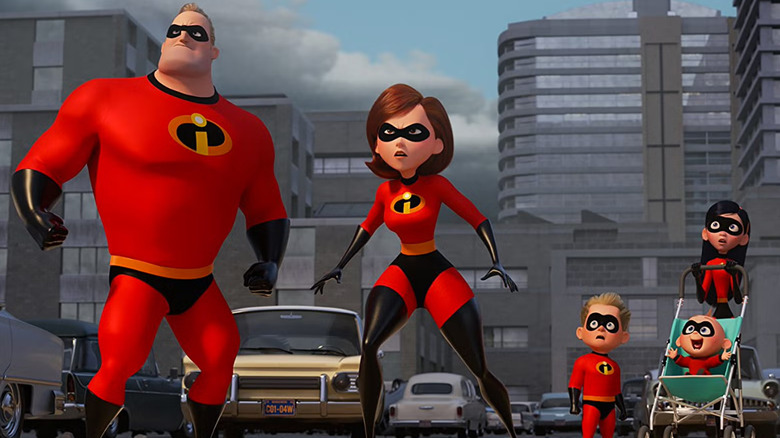
Which version of "Fantastic Four," you might ask? Though we're going with the 2005 Tim Story version, you could really choose any of the other versions and it would still work. Heck, as of this writing, Marvel Studios' "The Fantastic Four: First Steps" is still pending, and even if it's very good, it's still unlikely to be better than "The Incredibles," which is simply one of the very best superhero movies ever made, and it's almost certainly the best one not to be directly adapted from existing comic books.
The characters do feel awfully familiar, though. It's a family of four, plus an uber-powerful new baby, whose powers include invulnerability, super-stretchiness, and invisibility. Their primary foes include a disgruntled former friend of the patriarch and a mole-like underground driller. Individually, they may argue about who's the best, but when they come together as the first family of superheroics, they're unstoppable.
Unbound by the need to specifically utilize Doctor Doom or Galactus, and with the option to give one team member super speed in place of flame powers, director Brad Bird delivered a movie that fully captured the action, humor, and spirit of vintage Fantastic Four comics... without it actually being a Fantastic Four movie. He even integrated a little bit of "Watchmen" in there too, with its government ban on costumed vigilantes.
Indiana Jones And The Temple Of Doom Over Gunga Din
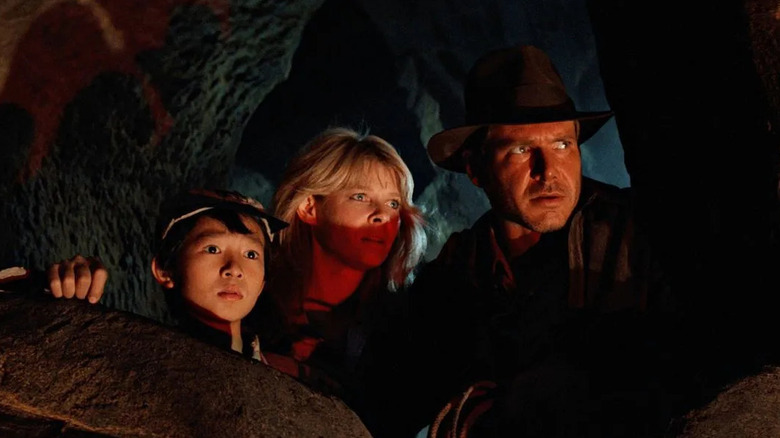
Though Indiana Jones' second, darkest cinematic outing introduced a generation to a particularly cinematic embellishment of India's Thuggee cult, Gunga Din got there first. Based on the Rudyard Kipling poem, this 1939 Cary Grant adventure movie involved a hidden temple accessible by elephants and a rope bridge, home to a maniacal guru who directs a murder cult to attack British soldiers in India. It's up to the title character, a brave local water carrier who longs to be a soldier, to alert colonial reinforcements by blowing a bugle with his last breath.
Though "Indiana Jones and the Temple of Doom" is considered problematic today -- anyone who has eaten at an Indian restaurant ever could tell you that stag beetles and monkey brains aren't on the menu -- "Gunga Din" is more so, with non-Indians playing Indians, who are portrayed as either simple or evil relative to their more civilized occupiers. That said, its inventive temple and setpieces clearly inspired Steven Spielberg, who placed Indiana Jones in a similar setting with more of a tongue-in-cheek tone. Set prior to "Raiders of the Lost Ark," it has a younger, more selfish Indy as a parody of the misogynist, colonialist heroes of the '30s, with Kate Capshaw's Willie Scott an equal caricature of old-fashioned, screaming damsels in distress.
"Raiders of the Lost Ark" is also better than 1954's "Secret of the Incas," in which a tomb-raiding Charlton Heston wears a very familiar outfit.
The Terminator Over Westworld
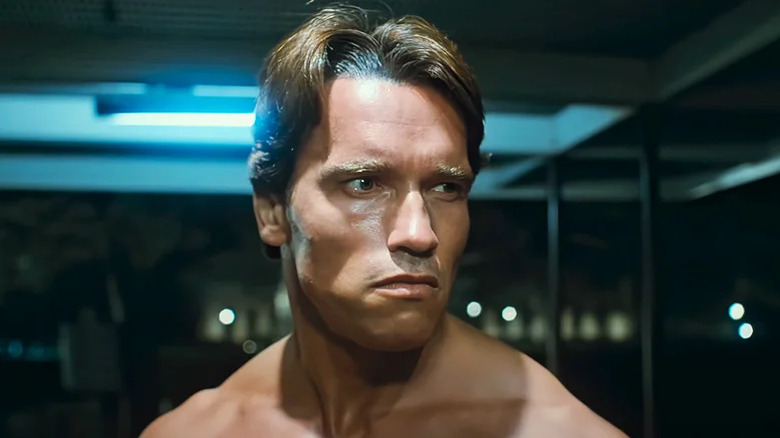
Before it was a multilayered, twisty TV series from Jonathan Nolan and Lisa Joy, "Westworld" was a 1973 movie written and directed by Michael Crichton. Like a more-famous franchise based on Crichton's books, it depicts a futuristic theme park that turns dangerous when its inhabitants start killing the guests. Rather than Jurassic-era dinosaurs, however, this park contains androids programmed to look and behave like denizens of medieval Europe, ancient Rome, and the American wild west. Once the safeguards are off, the biggest threat becomes an unstoppable robot gunslinger, played by Yul Brynner. It continues to fight even as its external skin is burned away.
Over a decade later, Arnold Schwarzenegger would play a near-identical character -- an unstoppable cyborg with a gun, from the future, who continues to fight even as his external skin is burned away. "The Terminator" became an instant classic, sending director James Cameron to the A-list and spawning multiple sequels and spin-offs. In fact, Cameron specifically set out to outdo Brynner's gunslinger visually, a mark he later said he "overshot by miles."
"Westworld" wasn't too shabby in the spin-off department itself. In a time when franchise filmmaking wasn't all that common, it spawned a theatrical sequel and a follow-up TV series, though that only lasted five episodes. In 2016, HBO rebooted it into the version most familiar to current viewers.
Tokyo Godfathers Over 3 Godfathers
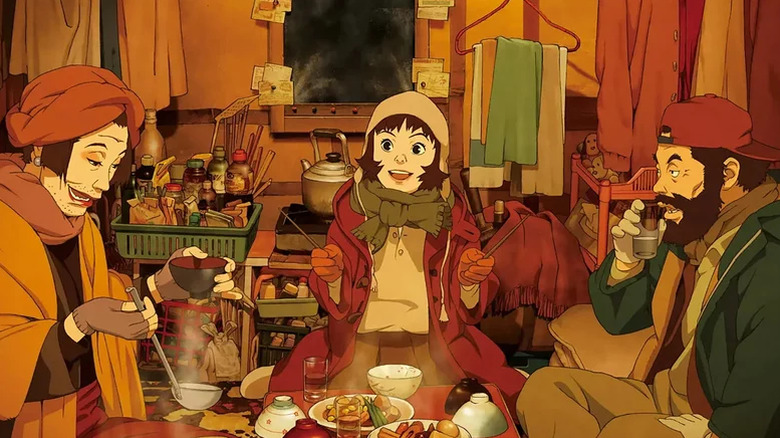
Peter B. Kyne's novelette "The Three Godfathers" has been adapted to the big screen multiple times, but it's the 1948 "3 Godfathers," directed by John Ford and starring John Wayne, that inspired anime master Satoshi Kon to make "Tokyo Godfathers." The novel and the movie adaptations are about three western outlaws who find a dying mother and her baby, and ultimately all sacrifice themselves to get the baby safely to civilization. John Wayne being John Wayne, his character doesn't die in the 1948 version, making it more of a heroic tale of redemption.
"Tokyo Godfathers" initially seems darker -- it's set in the present day, and rather than outlaws, the "godfathers" are three homeless people: an alcoholic, a transgender woman, and a teenage runaway. The baby's mother may not even be dead, but that's what the trio must find out during a rough journey through the darkest parts of the city on Christmas Eve. Ultimately, the holiday fable ends even more happily than John Wayne's version, but not before an unflinching look at life on the street for the three "godfathers," who become official godparents before all is said and done.
By changing the source material more drastically than any other cinematic adaptation of it, "Tokyo Godfathers" feels almost wholly original. It's an unflinching depiction of Tokyo life at its best and worst, as opposed to yet another John Wayne western.
Cars Over Doc Hollywood
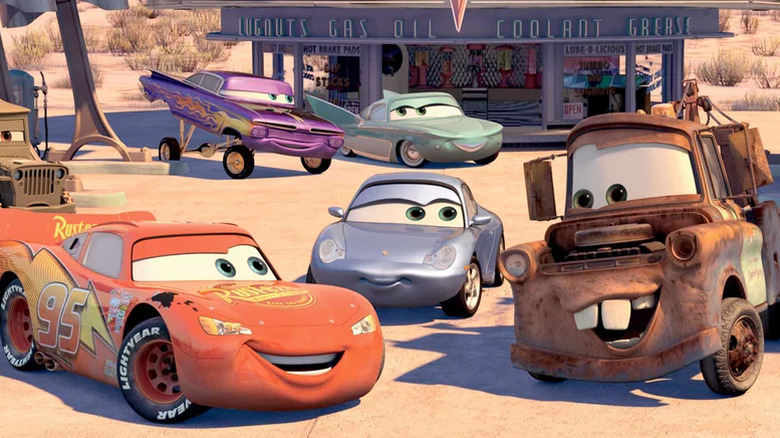
When Pixar's "Cars" initially came out, many critics and fans complained that it was simply an animated rip-off of the Michael J. Fox rom-com "Doc Hollywood," with its slick urban professional breaking down in a small town, finding romance, and learning to appreciate the slower pace of rural living. It's true that the plots are similar, but it's also true that "Doc Hollywood" isn't a great movie. By making it about sentient cars, John Lasseter and the Pixar crew improved the formulaic story and spawned a juggernaut of a franchise, plus a tie-in ride that's still the coolest thing in Disney's California Adventure theme park.
"Cars" may not be any adult's favorite Pixar movie, but it has enough charm to be watchable, with a gruff Paul Newman in his final voice-acting theatrical performance as Radiator Springs' town judge Doc Hudson (note the "Doc H."), mentoring laid-back race car superstar Lightning McQueen (Owen Wilson) to become a better version of himself. Pixar even manages to give Dan Whitney's "Larry the Cable Guy" persona an actual watchable movie on his otherwise awful resume, bringing out his warmth as rusty tow truck Mater.
Yes, the plot is basically "Doc Hollywood" with talking automobiles, but which one do people watch more?
Galaxy Quest Over Star Trek: The Motion Picture
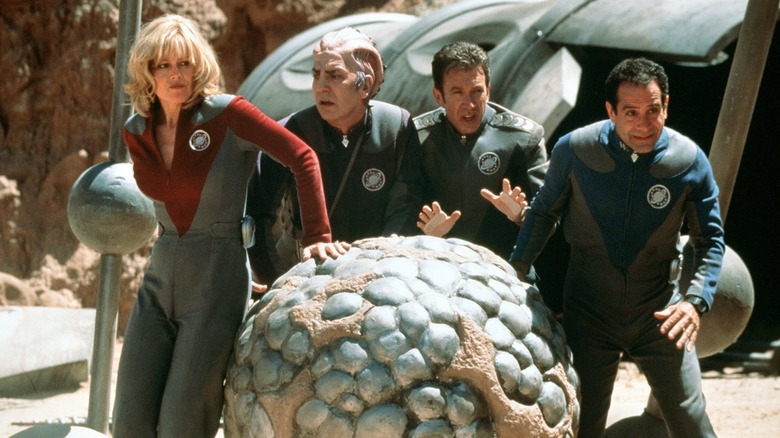
"Galaxy Quest" is often heralded as one of the best "Star Trek" movies, even though it isn't an official "Star Trek" movie -- it's essentially an A-list fan film, franchise tribute, parody, and ode to fandom all in one. Is it fair to compare it directly to any one "Star Trek" movie? Sort of. Since "Star Trek: The Motion Picture" was originally going to be a TV series called "Star Trek: Phase II," and "Galaxy Quest" is about extraordinary circumstances that lead to a revived TV series for the cast of its fictionalized "Trek" knockoff, they're somewhat comparable.
"Star Trek: TMP" essentially expanded the TV episode featuring the probe Nomad, renaming it V'Ger and giving it new origins. "Galaxy Quest" attempts to expand a typical "Star Trek" episode with every major trope, including the redshirts who die and the egomaniacal captain whose shirt keeps getting torn off. Before that, though, it's a meditation on denying age a la "The Wrath of Khan," and afterward it's a salute to the fans who memorize all the fictional technological details, not unlike when the Enterprise-D crew meets Zefram Cochrane in "First Contact."
Overall, it's a tribute to Gene Roddenberry's vision of people from very different backgrounds -- be they all humans or Thermians as well -- working together to create a better future for everyone. The actual "Trek" movies sometimes miss this important subtext.
Willy's Wonderland Over Five Nights At Freddy's
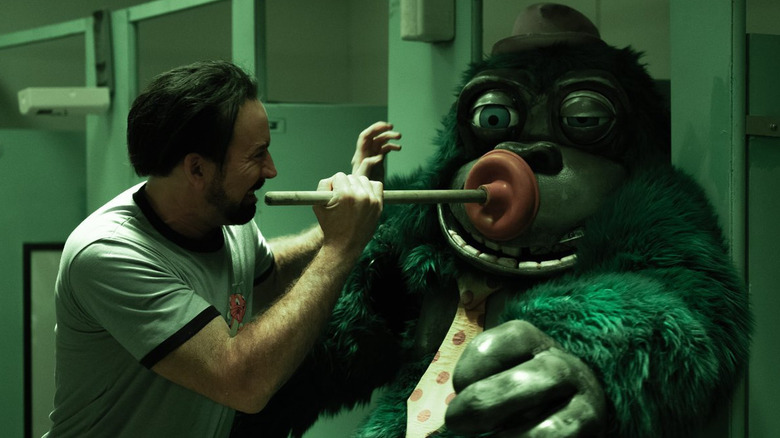
"Five Nights at Freddy's" was an instant hit as a video game due to its ingenious premise -- what if Chuck E. Cheese were evil and could kill you? Many sequel and spin-off games ensued, and the movie rights were quickly snapped up. Thanks in part due to a contract giving game creator Scott Cawthon some creative control, however, the movie stalled in development for a long time, with many scripts rejected. This allowed "Willy's Wonderland" to sneak in, with a secret weapon in Nicolas Cage. It turns out you can't trademark the concept of an evil Chuck E. Cheese.
"Five Nights at Freddy's" eventually came out, but by then, the concept may have bene overburdened with too much mythology. Rather than the rogue AIs they were in the first game, the animatronics now were retconned as haunted by the souls of dead kids, who make play forts with the main characters before turning dangerous. "Willy's Wonderland," which came out first, kept it simpler: The animatronics contain the souls of evil satanists, and a mysteriously Heaven-sent (and nonverbal) Nicolas Cage has to fight them while working as the night janitor, chugging energy drinks and playing pinball between kills. "FNAF," as fans dub it, also had to appeal to some of its younger fans and stay PG-13, which "Willy's" absolutely did not.
It comes down to whether you'd rather see haunted animatronics face down Josh Hutcherson or Nicolas Cage. Easy choice.
Alien Over The Thing From Another World
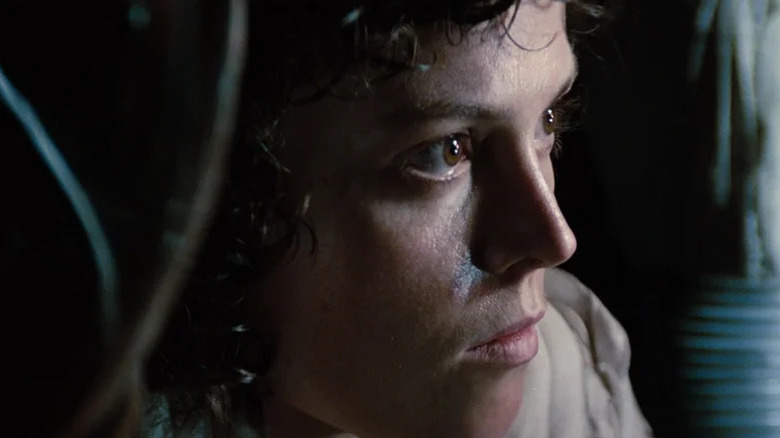
Most horror movie fans know that "The Thing From Another World" is based on the story "Who Goes There?," which was readapted by John Carpenter as "The Thing." Before that, however, screenwriter Dan O'Bannon revealed that the first movie, with its alien killing off people one by one in and enclosed space, was a key inspiration for "Alien," with "Forbidden Planet" and "Planet of the Vampires" also adding elements to a lesser degree. ("It! The Terror From Beyond Space" is often compared to "Alien," but it's not as blatantly acknowledged by the latter's writer.)
"The Thing From Another World" is fine for 1951, with James Arness as a giant vegetable man menacing the crew of an arctic outpost in black and white. "Alien," however, ups it in every area, with a working-class, used spacecraft building on the "Star Wars" aesthetic and alien sets and costumes designed by Swiss surrealist H.R. Giger that look like nothing ever seen onscreen before. The script for "Alien" may have been a rip-off, but all the visual elements broke new ground, and a stronger cast -- Tom Skerritt, Ian Holm, Sigourney Weaver, John Hurt, Yaphet Kotto, Harry Dean Stanton, and Veronica Cartwright -- has rarely been assembled for a sci-fi monster movie. It's arguably the greatest one of all time.
Threads Over The War Game

To viewers with an international perspective, the 1984 BBC nuclear war TV movie "Threads" may have seemed like a British attempt to one-up its American equivalent, "The Day After," a year prior. In fact, "Threads" was commissioned because a previous BBC docudrama about nuclear war, Peter Watkins' "The War Game," had been banned from TV by the government, though it did get a brief theatrical run.
In 1966, Watkins' film was perhaps too brutally honest, but by the '80s, with apocalyptic fiction all over theater screens and imbued in pop song lyrics, the public had more of a realistic idea of the horrors of nuclear aftermath. "Threads" made them tangible, and is still widely considered the most realistic nuclear war movie ever made -- "The Day After" had to add a disclaimer at the end that the real effects of atomic bombs would be worse, while "Threads" simply showed the absolute worst.
"Threads" maintains some of the docudrama aspects of "The War Game," with occasional narration and onscreen inter-titles, but while "The War Game" remains strictly educational documentary style in format, "Threads" lets you forget you're watching any kind of dramatization, as it involves the viewer in the characters, notably a young, working-class, pregnant woman named Ruth. Where "The War Game" overwhelms the viewer with grim statistics, "Threads" puts faces to them, and proceeds to fuel your nightmares by brutalizing them all.
The year after "Threads" aired, the BBC finally showed "The War Game."
Star Wars Over The Hidden Fortress
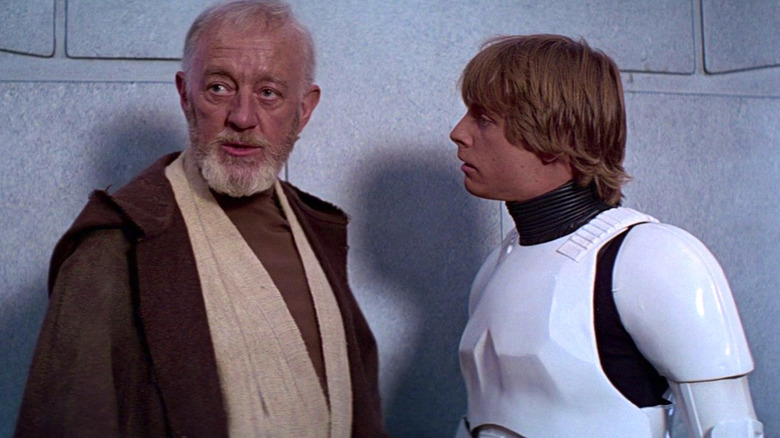
Akira Kurosawa is generally acclaimed as the greatest Japanese director, and one of the greatest of all time, responsible for epics like "The Seven Samurai" and "Ran," and the perspective-shifting "Rashomon." His 1958 "The Hidden Fortress," while his biggest hit until that point in Japan, initially didn't find as much success or acclaim in the U.S. It did find a fan in George Lucas, however, who used its plot structure for his original "Star Wars," now dubbed "A New Hope." In Kurosawa's original, two comic relief characters discover a samurai general and a princess in hiding, and travel with them to safe territory in hopes of a reward... and of avoiding the general's scarred arch-rival.
Kurosawa is no hack, and "The Hidden Fortress," even if it wouldn't make many critics' top five lists of his films, is still wonderfully directed. Simply put, though, it's no "Star Wars," because very little is. Lucas took a Japanese period adventure then little-seen outside its home country and used its plot to create a universal monomyth that has spawned 11 more domestic theatrical films to date, as well as streaming shows, animated series, and a plethora of other media. Even aspects he didn't use in the first "Star Wars," like the princess traveling in disguise, would get recycled into "The Phantom Menace, and even 'The Acolyte."
Like many of these rip-offs, "Star Wars" ultimately spurred interest in "The Hidden Fortress" to the point that most fans of the imitator now know and love the original too.
If you're looking for the easiest way to keep up with all the major movie and TV news, why not sign up to our free newsletter?
Read the original article on SlashFilm.













